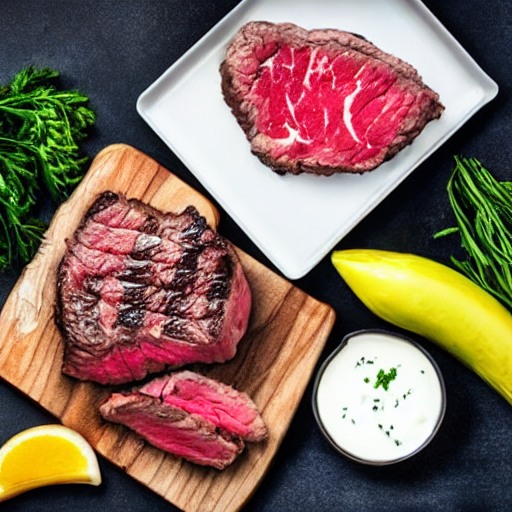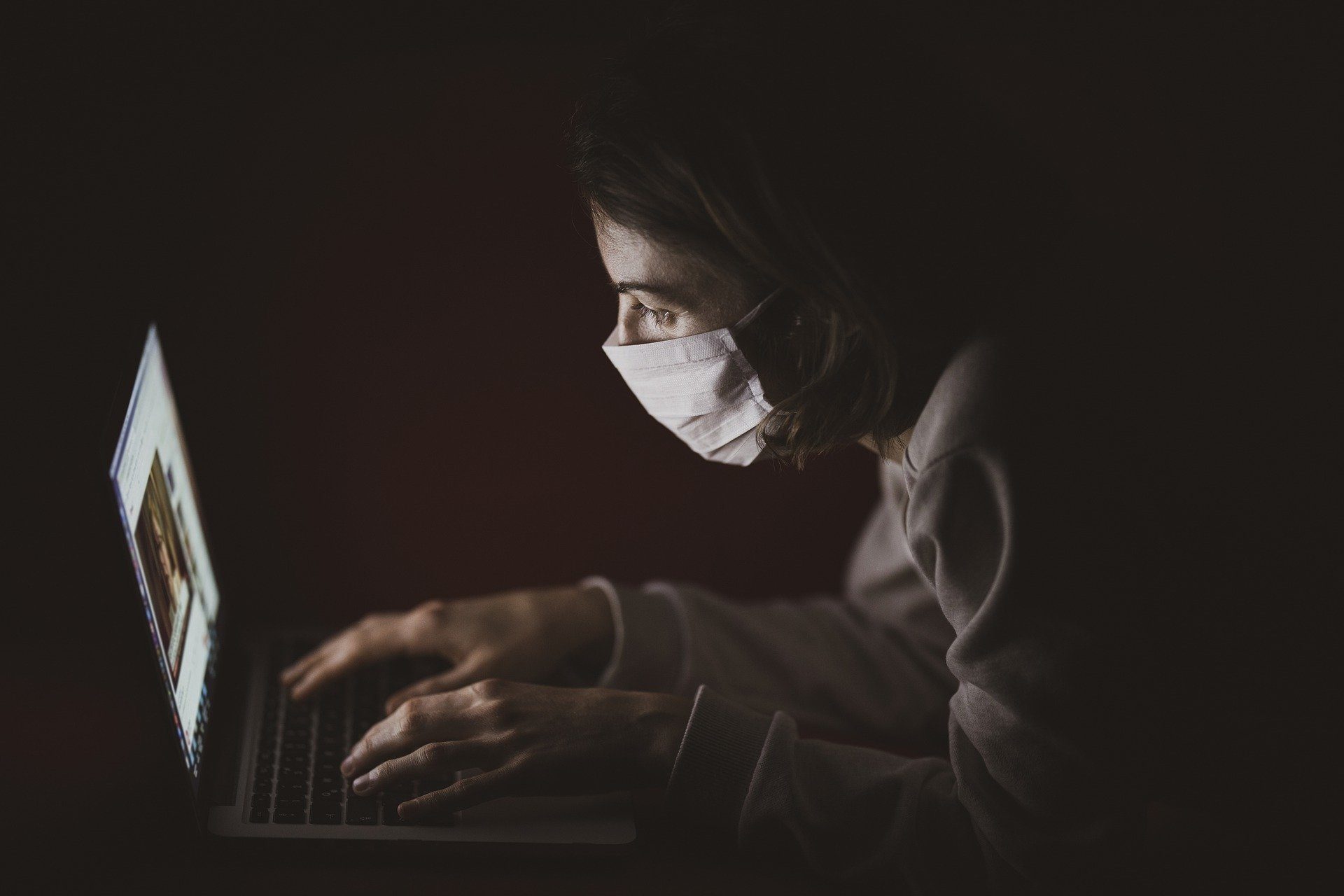I’m giving you OVER 40 peer reviewed studies showing how poorly masks prevent viral contamination and actually increases risk of infection. Do with it what you will but know you are increasing your odds of getting sick and increasing the odds of others getting sick by trying to avoid community immunity.
Open our schools, businesses and churches/synagogues.
We are killing far more people with our response to this virus than from the virus itself......
Don’t take my word for it!
Research!!
——————————————————
In this meta-analysis, face masks were found to have no detectable effect against transmission of viral infections. (1) It found: “Compared to no masks, there was no reduction of influenza-like illness cases or influenza for masks in the general population, nor in healthcare workers.”
This 2020 meta-analysis found that evidence from randomized controlled trials of face masks did not support a substantial effect on transmission of laboratory-confirmed influenza, either when worn by infected persons (source control) or by persons in the general community to reduce their susceptibility. (2)
Another recent review found that masks had no effect specifically against Covid-19, although facemask use seemed linked to, in 3 of 31 studies, “very slightly reduced” odds of developing influenza-like illness. (3)
This 2019 study of 2862 participants showed that both N95 respirators and surgical masks “resulted in no significant difference in the incidence of laboratory confirmed influenza.” (4)
This 2016 meta-analysis found that both randomized controlled trials and observational studies of N95 respirators and surgical masks used by healthcare workers did not show benefit against transmission of acute respiratory infections. It was also found that acute respiratory infection transmission “may have occurred via contamination of provided respiratory protective equipment during storage and reuse of masks and respirators throughout the workday.” (5)
A 2011 meta-analysis of 17 studies regarding masks and effect on transmission of influenza found that “none of the studies established a conclusive relationship between mask/respirator use and protection against influenza infection.” (6) However, authors speculated that effectiveness of masks may be linked to early, consistent and correct usage.
Face mask use was likewise found to be not protective against the common cold, compared to controls without face masks among healthcare workers. (7)
Airflow around masks
Masks have been assumed to be effective in obstructing forward travel of viral particles. Considering those positioned next to or behind a mask wearer, there have been farther transmission of virus-laden fluid particles from masked individuals than from unmasked individuals, by means of “several leakage jets, including intense backward and downwards jets that may present major hazards,” and a “potentially dangerous leakage jet of up to several meters.” (8) All masks were thought to reduce forward airflow by 90% or more over wearing no mask. However, Schlieren imaging showed that both surgical masks and cloth masks had farther brow jets (unfiltered upward airflow past eyebrows) than not wearing any mask at all, 182 mm and 203 mm respectively, vs none discernible with no mask. Backward unfiltered airflow was found to be strong with all masks compared to not masking.
For both N95 and surgical masks, it was found that expelled particles from 0.03 to 1 micron were deflected around the edges of each mask, and that there was measurable penetration of particles through the filter of each mask. (9)
Penetration through masks
A study of 44 mask brands found mean 35.6% penetration (+ 34.7%). Most medical masks had over 20% penetration, while “general masks and handkerchiefs had no protective function in terms of the aerosol filtration efficiency.” The study found that “Medical masks, general masks, and handkerchiefs were found to provide little protection against respiratory aerosols.” (10)
It may be helpful to remember that an aerosol is a colloidal suspension of liquid or solid particles in a gas. In respiration, the relevant aerosol is the suspension of bacterial or viral particles in inhaled or exhaled breath.
In another study, penetration of cloth masks by particles was almost 97% and medical masks 44%. (11)
N95 respirators
Honeywell is a manufacturer of N95 respirators. These are made with a 0.3 micron filter. (12) N95 respirators are so named, because 95% of particles having a diameter of 0.3 microns are filtered by the mask forward of the wearer, by use of an electrostatic mechanism. Coronaviruses are approximately 0.125 microns in diameter.
This meta-analysis found that N95 respirators did not provide superior protection to facemasks against viral infections or influenza-like infections. (13) This study did find superior protection by N95 respirators when they were fit-tested compared to surgical masks. (14)
This study found that 624 out of 714 people wearing N95 masks left visible gaps when putting on their own masks. (15)
Surgical masks
This study found that surgical masks offered no protection at all against influenza. (16) Another study found that surgical masks had about 85% penetration ratio of aerosolized inactivated influenza particles and about 90% of Staphylococcus aureus bacteria, although S aureus particles were about 6x the diameter of influenza particles. (17)
Use of masks in surgery were found to slightly increase incidence of infection over not masking in a study of 3,088 surgeries. (18) The surgeons’ masks were found to give no protective effect to the patients.
Other studies found no difference in wound infection rates with and without surgical masks. (19) (20)
This study found that “there is a lack of substantial evidence to support claims that facemasks protect either patient or surgeon from infectious contamination.” (21)
This study found that medical masks have a wide range of filtration efficiency, with most showing a 30% to 50% efficiency. (22)
Specifically, are surgical masks effective in stopping human transmission of coronaviruses? Both experimental and control groups, masked and unmasked respectively, were found to “not shed detectable virus in respiratory droplets or aerosols.” (23) In that study, they “did not confirm the infectivity of coronavirus” as found in exhaled breath.
A study of aerosol penetration showed that two of the five surgical masks studied had 51% to 89% penetration of polydisperse aerosols. (24)
In another study, that observed subjects while coughing, “neither surgical nor cotton masks effectively filtered SARS-CoV-2 during coughs by infected patients.” And more viral particles were found on the outside than on the inside of masks tested. (25)
Cloth masks
Cloth masks were found to have low efficiency for blocking particles of 0.3 microns and smaller. Aerosol penetration through the various cloth masks examined in this study were between 74 and 90%. Likewise, the filtration efficiency of fabric materials was 3% to 33% (26)
Healthcare workers wearing cloth masks were found to have 13 times the risk of influenza-like illness than those wearing medical masks. (27)
This 1920 analysis of cloth mask use during the 1918 pandemic examines the failure of masks to impede or stop flu transmission at that time, and concluded that the number of layers of fabric required to prevent pathogen penetration would have required a suffocating number of layers, and could not be used for that reason, as well as the problem of leakage vents around the edges of cloth masks. (28)
Masks against Covid-19
The New England Journal of Medicine editorial on the topic of mask use versus Covid-19 assesses the matter as follows:
“We know that wearing a mask outside health care facilities offers little, if any, protection from infection. Public health authorities define a significant exposure to Covid-19 as face-to-face contact within 6 feet with a patient with symptomatic Covid-19 that is sustained for at least a few minutes (and some say more than 10 minutes or even 20 minutes). The chance of catching Covid-19 from a passing interaction in a public space is therefore minimal. In many cases, the desire for widespread masking is a reflexive reaction to anxiety over the pandemic.” (29)
Are masks safe?
During walking or other exercise
Surgical mask wearers had significantly increased dyspnea after a 6-minute walk than non-mask wearers. (30)
Researchers are concerned about possible burden of facemasks during physical activity on pulmonary, circulatory and immune systems, due to oxygen reduction and air trapping reducing substantial carbon dioxide exchange. As a result of hypercapnia, there may be cardiac overload, renal overload, and a shift to metabolic acidosis. (31)
Risks of N95 respirators
Pregnant healthcare workers were found to have a loss in volume of oxygen consumption by 13.8% compared to controls when wearing N95 respirators. 17.7% less carbon dioxide was exhaled. (32) Patients with end-stage renal disease were studied during use of N95 respirators. Their partial pressure of oxygen (PaO2) decreased significantly compared to controls and increased respiratory adverse effects. (33) 19% of the patients developed various degrees of hypoxemia while wearing the masks.
Healthcare workers’ N95 respirators were measured by personal bioaerosol samplers to harbor influenza virus. (34) And 25% of healthcare workers’ facepiece respirators were found to contain influenza in an emergency department during the 2015 flu season. (35)
Risks of surgical masks
Healthcare workers’ surgical masks also were measured by personal bioaerosol samplers to harbor for influenza virus. (36)
Various respiratory pathogens were found on the outer surface of used medical masks, which could result in self-contamination. The risk was found to be higher with longer duration of mask use. (37)
Surgical masks were also found to be a repository of bacterial contamination. The source of the bacteria was determined to be the body surface of the surgeons, rather than the operating room environment. (38) Given that surgeons are gowned from head to foot for surgery, this finding should be especially concerning for laypeople who wear masks. Without the protective garb of surgeons, laypeople generally have even more exposed body surface to serve as a source for bacteria to collect on their masks.
Risks of cloth masks
Healthcare workers wearing cloth masks had significantly higher rates of influenza-like illness after four weeks of continuous on-the-job use, when compared to controls. (39)
The increased rate of infection in mask-wearers may be due to a weakening of immune function during mask use. Surgeons have been found to have lower oxygen saturation after surgeries even as short as 30 minutes. (40) Low oxygen induces hypoxia-inducible factor 1 alpha (HIF-1). (41) This in turn down-regulates CD4+ T-cells. CD4+ T-cells, in turn, are necessary for viral immunity. (42)
Weighing risks versus benefits of mask use
In the summer of 2020 the United States is experiencing a surge of popular mask use, which is frequently promoted by the media, political leaders and celebrities. Homemade and store-bought cloth masks and surgical masks or N95 masks are being used by the public especially when entering stores and other publicly accessible buildings. Sometimes bandanas or scarves are used. The use of face masks, whether cloth, surgical or N95, creates a poor obstacle to aerosolized pathogens as we can see from the meta-analyses and other studies in this paper, allowing both transmission of aerosolized pathogens to others in various directions, as well as self-contamination.
It must also be considered that masks impede the necessary volume of air intake required for adequate oxygen exchange, which results in observed physiological effects that may be undesirable. Even 6- minute walks, let alone more strenuous activity, resulted in dyspnea. The volume of unobstructed oxygen in a typical breath is about 100 ml, used for normal physiological processes. 100 ml O2 greatly exceeds the volume of a pathogen required for transmission.
The foregoing data show that masks serve more as instruments of obstruction of normal breathing, rather than as effective barriers to pathogens. Therefore, masks should not be used by the general public, either by adults or children, and their limitations as prophylaxis against pathogens should also be considered in medical settings.
Endnotes
1 T Jefferson, M Jones, et al. Physical interventions to interrupt or reduce the spread of respiratory viruses. MedRxiv. 2020 Apr 7.
https://www.medrxiv.org/content/10.1101/2020.03.30.20047217v2
2 J Xiao, E Shiu, et al. Nonpharmaceutical measures for pandemic influenza in non-healthcare settings – personal protective and environmental measures. Centers for Disease Control. 26(5); 2020 May.
https://wwwnc.cdc.gov/eid/article/26/5/19-0994_article
3 J Brainard, N Jones, et al. Facemasks and similar barriers to prevent respiratory illness such as COVID19: A rapid systematic review. MedRxiv. 2020 Apr 1.
https://www.medrxiv.org/content/10.1101/2020.04.01.20049528v1.full.pdf
4 L Radonovich M Simberkoff, et al. N95 respirators vs medical masks for preventing influenza among health care personnel: a randomized clinic trial. JAMA. 2019 Sep 3. 322(9): 824-833.
https://jamanetwork.com/journals/jama/fullarticle/2749214
5 J Smith, C MacDougall. CMAJ. 2016 May 17. 188(8); 567-574.
https://www.cmaj.ca/content/188/8/567
6 F bin-Reza, V Lopez, et al. The use of masks and respirators to prevent transmission of influenza: a systematic review of the scientific evidence. 2012 Jul; 6(4): 257-267.
https://www.ncbi.nlm.nih.gov/pmc/articles/PMC5779801/
7 J Jacobs, S Ohde, et al. Use of surgical face masks to reduce the incidence of the common cold among health care workers in Japan: a randomized controlled trial. Am J Infect Control. 2009 Jun; 37(5): 417-419.
https://pubmed.ncbi.nlm.nih.gov/19216002/
8 M Viola, B Peterson, et al. Face coverings, aerosol dispersion and mitigation of virus transmission risk.
https://arxiv.org/abs/2005.10720, https://arxiv.org/ftp/arxiv/papers/2005/2005.10720.pdf
9 S Grinshpun, H Haruta, et al. Performance of an N95 filtering facepiece particular respirator and a surgical mask during human breathing: two pathways for particle penetration. J Occup Env Hygiene. 2009; 6(10):593-603.
https://www.tandfonline.com/doi/pdf/10.1080/15459620903120086
10 H Jung, J Kim, et al. Comparison of filtration efficiency and pressure drop in anti-yellow sand masks, quarantine masks, medical masks, general masks, and handkerchiefs. Aerosol Air Qual Res. 2013 Jun. 14:991-1002.
https://aaqr.org/articles/aaqr-13-06-oa-0201.pdf
11 C MacIntyre, H Seale, et al. A cluster randomized trial of cloth masks compared with medical masks in healthcare workers. BMJ Open. 2015; 5(4)
https://bmjopen.bmj.com/content/5/4/e006577.long
12 N95 masks explained. https://www.honeywell.com/us/en/news/2020/03/n95-masks-explained
13 V Offeddu, C Yung, et al. Effectiveness of masks and respirators against infections in healthcare workers: A systematic review and meta-analysis. Clin Inf Dis. 65(11), 2017 Dec 1; 1934-1942.
https://academic.oup.com/cid/article/65/11/1934/4068747
14 C MacIntyre, Q Wang, et al. A cluster randomized clinical trial comparing fit-tested and non-fit-tested N95 respirators to medical masks to prevent respiratory virus infection in health care workers. Influenza J. 2010 Dec 3.
https://onlinelibrary.wiley.com/doi/epdf/10.1111/j.1750-2659.2011.00198.x
15 M Walker. Study casts doubt on N95 masks for the public. MedPage Today. 2020 May 20.
https://www.medpagetoday.com/infectiousdisease/publichealth/86601
16 C MacIntyre, Q Wang, et al. A cluster randomized clinical trial comparing fit-tested and non-fit-tested N95 respirators to medical masks to prevent respiratory virus infection in health care workers. Influenza J. 2010 Dec 3.
https://onlinelibrary.wiley.com/doi/epdf/10.1111/j.1750-2659.2011.00198.x
17 N Shimasaki, A Okaue, et al. Comparison of the filter efficiency of medical nonwoven fabrics against three different microbe aerosols. Biocontrol Sci. 2018; 23(2). 61-69.
https://www.jstage.jst.go.jp/article/bio/23/2/23_61/_pdf/-char/en
18 T Tunevall. Postoperative wound infections and surgical face masks: A controlled study. World J Surg. 1991 May; 15: 383-387.
https://link.springer.com/article/10.1007%2FBF01658736
19 N Orr. Is a mask necessary in the operating theatre? Ann Royal Coll Surg Eng 1981: 63: 390-392.
https://www.ncbi.nlm.nih.gov/pmc/articles/PMC2493952/pdf/annrcse01509-0009.pdf
20 N Mitchell, S Hunt. Surgical face masks in modern operating rooms – a costly and unnecessary ritual? J Hosp Infection. 18(3); 1991 Jul 1. 239-242.
https://www.journalofhospitalinfection.com/article/0195-6701(91)90148-2/pdf
21 C DaZhou, P Sivathondan, et al. Unmasking the surgeons: the evidence base behind the use of facemasks in surgery. JR Soc Med. 2015 Jun; 108(6): 223-228.
https://www.ncbi.nlm.nih.gov/pmc/articles/PMC4480558/
22 L Brosseau, M Sietsema. Commentary: Masks for all for Covid-19 not based on sound data. U Minn Ctr Inf Dis Res Pol. 2020 Apr 1.
https://www.cidrap.umn.edu/news-perspective/2020/04/commentary-masks-all-covid-19-not-based-sound-data
23 N Leung, D Chu, et al. Respiratory virus shedding in exhaled breath and efficacy of face masks Nature Research. 2020 Mar 7. 26,676-680 (2020).
https://www.researchsquare.com/article/rs-16836/v1
24 S Rengasamy, B Eimer, et al. Simple respiratory protection – evaluation of the filtration performance of cloth masks and common fabric materials against 20-1000 nm size particles. Ann Occup Hyg. 2010 Oct; 54(7): 789-798.
https://academic.oup.com/annweh/article/54/7/789/202744
25 S Bae, M Kim, et al. Effectiveness of surgical and cotton masks in blocking SARS-CoV-2: A controlled comparison in 4 patients. Ann Int Med. 2020 Apr 6.
https://www.acpjournals.org/doi/10.7326/M20-1342
26 S Rengasamy, B Eimer, et al. Simple respiratory protection – evaluation of the filtration performance of cloth masks and common fabric materials against 20-1000 nm size particles. Ann Occup Hyg. 2010 Oct; 54(7): 789-798.
https://academic.oup.com/annweh/article/54/7/789/202744
27 C MacIntyre, H Seale, et al. A cluster randomized trial of cloth masks compared with medical masks in healthcare workers. BMJ Open. 2015; 5(4)
https://bmjopen.bmj.com/content/5/4/e006577.long
28 W Kellogg. An experimental study of the efficacy of gauze face masks. Am J Pub Health. 1920. 34-42.
https://ajph.aphapublications.org/doi/pdf/10.2105/AJPH.10.1.34
29 M Klompas, C Morris, et al. Universal masking in hospitals in the Covid-19 era. N Eng J Med. 2020; 382 e63.
https://www.nejm.org/doi/full/10.1056/NEJMp2006372
30 E Person, C Lemercier et al. Effect of a surgical mask on six minute walking distance. Rev Mal Respir. 2018 Mar; 35(3):264-268.
https://pubmed.ncbi.nlm.nih.gov/29395560/
31 B Chandrasekaran, S Fernandes. Exercise with facemask; are we handling a devil’s sword – a physiological hypothesis. Med Hypothese. 2020 Jun 22. 144:110002.
https://pubmed.ncbi.nlm.nih.gov/32590322/
32 P Shuang Ye Tong, A Sugam Kale, et al. Respiratory consequences of N95-type mask usage in pregnant healthcare workers – A controlled clinical study. Antimicrob Resist Infect Control. 2015 Nov 16; 4:48.
https://pubmed.ncbi.nlm.nih.gov/26579222/
33 T Kao, K Huang, et al. The physiological impact of wearing an N95 mask during hemodialysis as a precaution against SARS in patients with end-stage renal disease. J Formos Med Assoc. 2004 Aug; 103(8):624-628.
https://pubmed.ncbi.nlm.nih.gov/15340662/
34 F Blachere, W Lindsley et al. Assessment of influenza virus exposure and recovery from contaminated surgical masks and N95 respirators. J Viro Methods. 2018 Oct; 260:98-106.
https://pubmed.ncbi.nlm.nih.gov/30029810/
35 A Rule, O Apau, et al. Healthcare personnel exposure in an emergency department during influenza season. PLoS One. 2018 Aug 31; 13(8): e0203223.
https://pubmed.ncbi.nlm.nih.gov/30169507/
36 F Blachere, W Lindsley et al. Assessment of influenza virus exposure and recovery from contaminated surgical masks and N95 respirators. J Viro Methods. 2018 Oct; 260:98-106.
https://pubmed.ncbi.nlm.nih.gov/30029810/
37 A Chughtai, S Stelzer-Braid, et al. Contamination by respiratory viruses on our surface of medical masks used by hospital healthcare workers. BMC Infect Dis. 2019 Jun 3; 19(1): 491.
https://pubmed.ncbi.nlm.nih.gov/31159777/
38 L Zhiqing, C Yongyun, et al. J Orthop Translat. 2018 Jun 27; 14:57-62.
https://pubmed.ncbi.nlm.nih.gov/30035033/
39 C MacIntyre, H Seale, et al. A cluster randomized trial of cloth masks compared with medical masks in healthcare workers. BMJ Open. 2015; 5(4)
https://bmjopen.bmj.com/content/5/4/e006577
40 A Beder, U Buyukkocak, et al. Preliminary report on surgical mask induced deoxygenation during major surgery. Neurocirugia. 2008; 19: 121-126.
http://scielo.isciii.es/pdf/neuro/v19n2/3.pdf
41 D Lukashev, B Klebanov, et al. Cutting edge: Hypoxia-inducible factor 1-alpha and its activation-inducible short isoform negatively regulate functions of CD4+ and CD8+ T lymphocytes. J Immunol. 2006 Oct 15; 177(8) 4962-4965.
https://www.jimmunol.org/content/177/8/4962
42 A Sant, A McMichael. Revealing the role of CD4+ T-cells in viral immunity. J Exper Med. 2012 Jun 30; 209(8):1391-1395.
https://europepmc.org/article/PMC/3420330











